Cryptocurrency trading can be a complex and exciting journey, but choosing the right platform to buy and sell it is an important first step. Binance is one of the most popular crypto trading platforms out there, but is it the right one for you to trade crypto?
In this Binance review, we’ll break down everything you need to know, from its wide variety of coins to its fees and trading features.
Key Takeaways:
- Binance offers a diverse range of trading services, including spot, margin, and futures trading, alongside advanced features like Binance nft, Binance Earn, and Binance Launchpad.
- It has competitive trading fees with 0.1% maker/taker and offers a 25% discount for BNB holders.
- The Binance exchange prioritizes regulatory compliance and operates in various jurisdictions worldwide, but not available in the United States (Binance.US available).
Binance Review At a Glance
| Founded | 2017 |
| Founder | Changpeng Zhao |
| Trading Features | Spot trading, derivatives trading (futures and options), copy trading, P2P trading |
| Supported Coins | 389+ coins and 1200+ trading pairs |
| Native Token | BNB (Binance Coin) |
| Fiat Support | Yes (USD, EUR, GBP, and more) |
| Spot Market Fees | 0.1% Maker/taker |
| Futures Trading Fees | 0.02% maker and 0.05% taker |
| Security Features | 2FA, Cold Storage, SAFU Fund, Address Whitelisting, Anti-Phishing Code |
| Mobile App | Available for iOS and Android |
| Earn | Staking, Dual Investment, crypto Loans, Mining |
| Decentralized Exchange | Yes |
| Launchpad | Yes, for new token launches |
| Customer Support | 24/7 via chat and email |
What is Binance?
Binance is a global cryptocurrency exchange, known for its extensive range of services and high trading volumes. It was founded by Changpeng Zhao (CZ) in 2017. As of now, it has a user base of over 200 million traders from more than 100 countries. The platform handles an average daily trading volume of around $20 billion (source: CoinMarketCap).
Binance, though initially founded in China, established its headquarters in Japan shortly thereafter. This relocation was due to regulatory restrictions on cryptocurrency businesses within China. It subsequently expanded its operations to Taiwan and then Malta, seeking jurisdictions with more favorable regulatory environments for cryptocurrency exchanges.
Binance’s product suite is diverse, including:
- Binance Exchange: The largest crypto exchange by trade volume, offering spot, margin, and futures trading.
- Binance Square: A platform for community discussions, similar to twitter (x).
- Binance nft: The official nft marketplace, where you can trade, stake, and loan non-fungible tokens.
- Binance Charity: Uses blockchain technology to enhance transparency and efficiency in charitable donations.
- Binance Academy: It offers educational resources on blockchain and cryptocurrency in over 10 languages, making knowledge accessible to a global audience.
- Binance Research: It provides in-depth analysis and insights into the digital asset market, catering to institutional investors and retail users alike.
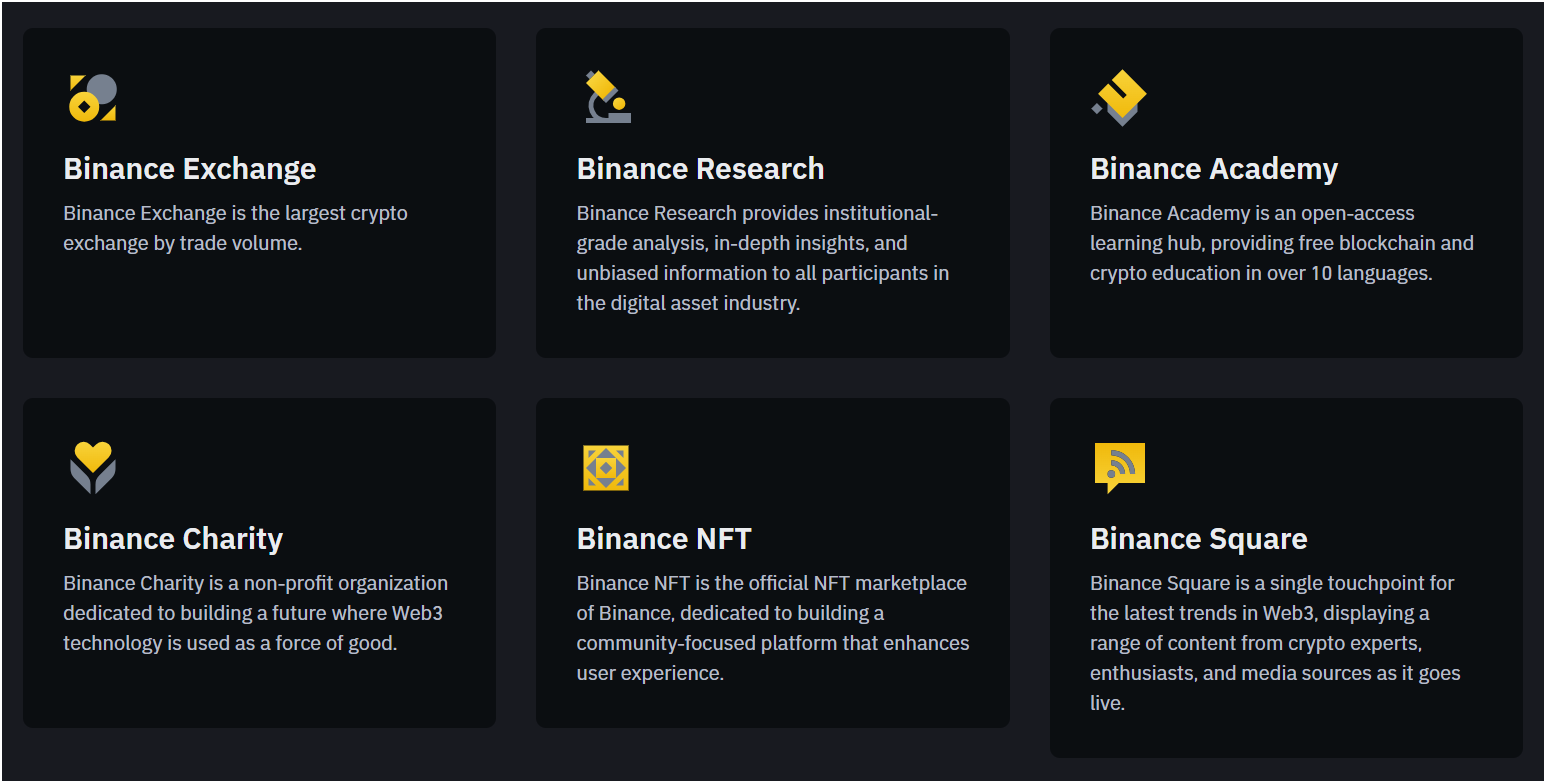
The platform supports trading in over 389 cryptocurrencies, including popular assets like bitcoin (btc), ethereum (eth), and Binance Coin (BNB). It is also known for its user-centric approach, with a strong emphasis on security and regulatory compliance.
Pros of Binance
- Highest trading volume and liquidity in the crypto market
- Competitive trading fees and a 25% discount for BNB holders
- Advanced trading features like leverage trading and copy trading
- User-friendly “Simple” mode for beginners to buy crypto
- Earn passive income on idle assets with Binance staking
Cons of Binance
- Limited fiat-off-ramp methods in certain countries
- US residents are not supported (Separate Binance.US platform)
Binance Fees and Discounts
Spot Fees
Spot trading fees on Binance apply to transactions involving buying or selling cryptocurrencies at current market prices. These fees are tiered based on the user’s VIP level, which is determined by their 30-day trading volume and Binance Coin (BNB) balance.
The base fee for spot trading starts at 0.10% for both makers (those who provide liquidity) and takers (those who take liquidity). Using BNB to pay for fees provides a discount, typically around 25%. Higher VIP levels enjoy progressively lower fees.
Here’s a breakdown of the spot trading fees by VIP level:
| VIP Level | 30-Day Trade Volume (USD) | BNB Balance | Maker Fee | Taker Fee |
| 0 | – | < 25 BNB | 0.10% | 0.10% |
| 1 | ≥ 1M | ≥ 25 BNB | 0.09% | 0.10% |
| 2 | ≥ 5M | ≥ 100 BNB | 0.08% | 0.10% |
| 3 | ≥ 20M | ≥ 250 BNB | 0.042% | 0.06% |
| 4 | ≥ 100M | ≥ 500 BNB | 0.042% | 0.054% |
| 5 | ≥ 150M | ≥ 1000 BNB | 0.036% | 0.048% |
| 6 | ≥ 400M | ≥ 1700 BNB | 0.030% | 0.042% |
| 7 | ≥ 800M | ≥ 3000 BNB | 0.024% | 0.036% |
| 8 | ≥ 2000M | ≥ 4500 BNB | 0.018% | 0.03% |
| 9 | ≥ 4000M | ≥ 5500 BNB | 0.012% | 0.024% |
Futures Fees
The fees for futures trading are generally lower than spot trading fees and are also tiered based on the user’s VIP level. The base fee for futures trading starts at 0.02% for makers and 0.05% for takers. Similar to spot trading, higher VIP levels enjoy lower fees.
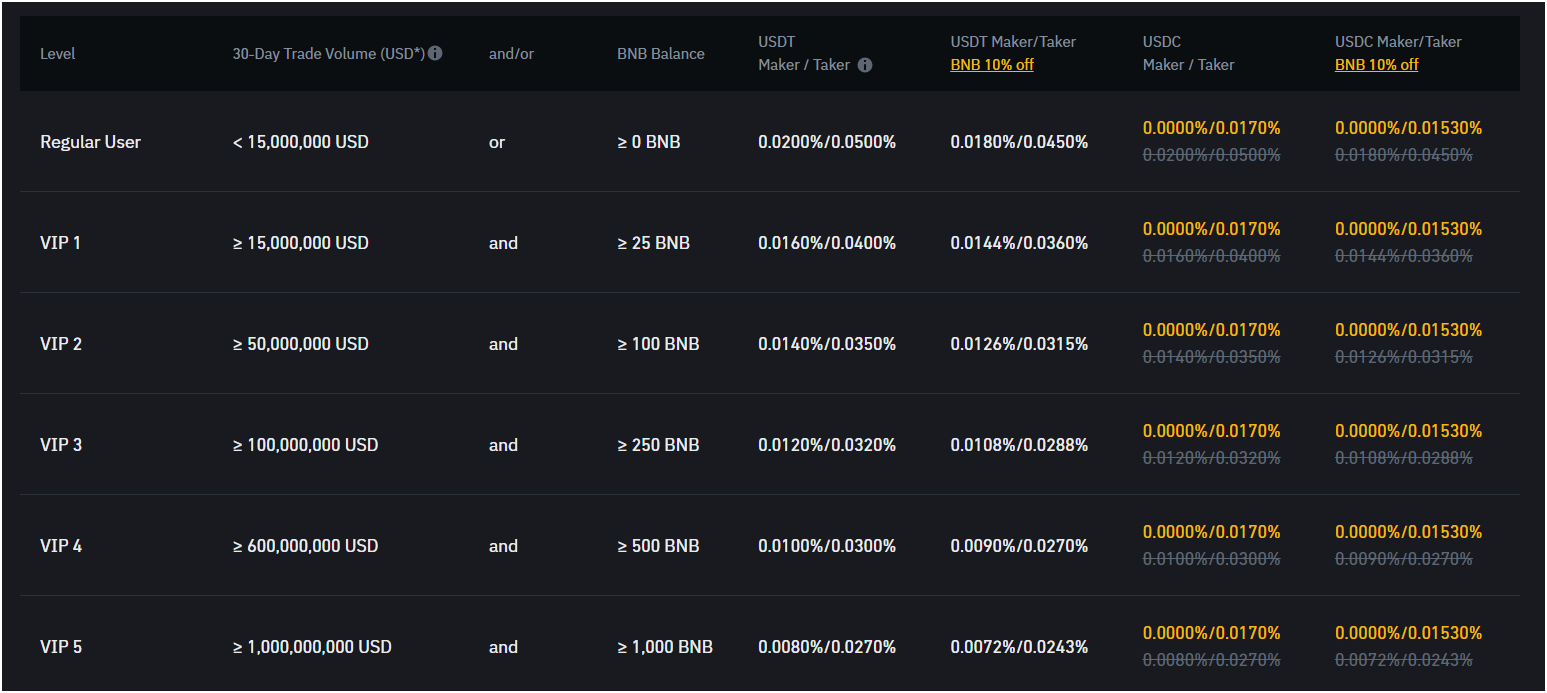
Options Trading Fees
The fees for options trading are typically a flat rate per contract. Currently, Binance charges a flat fee of 0.02% of the notional value of the contract, which is competitive compared to other exchanges.
Deposit & Withdrawal Fees
Depositing funds into Binance is generally free, but withdrawal fees vary depending on the cryptocurrency and its network. Binance adjusts these fees according to network congestion and transaction costs.
For example, bitcoin (btc) withdrawals typically have a fee of 0.00012 btc, while ethereum (eth) withdrawals have a fee of 0.0016 eth.
Here’s a sample of withdrawal fees for some popular cryptocurrencies:
| Cryptocurrency | Network | Withdrawal Fee |
| bitcoin (btc) | btc | 0.00012 btc |
| ethereum (eth) | ERC20 | 0.0016 eth |
| Tether (USDT) | ERC20 | 7 USDT |
| Binance Coin (BNB) | BEP20 | 0.0006 BNB |
| Ripple (XRP) | XRP | 0.2 XRP |
Check out the full Binance fee structure here.
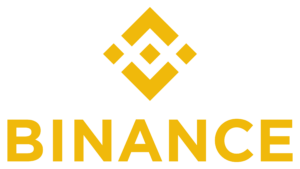
Is Binance Safe to Use?
Yes, Binance is a safe crypto trading platform. Here’s a breakdown of the security features Binance employs to ensure a secure trading environment.
- Two-factor authentication (2FA): Binance offers several options for two-factor authentication, which adds an extra layer of security to your account. Options include Google Authenticator, SMS-based 2FA, and Binance’s own Authenticator. This additional step ensures that even if someone has your password, they cannot access your account without the second factor.
- Know Your Customer (KYC): The KYC process is a mandatory identity verification procedure. You are required to submit government-issued identification documents. This helps Binance verify user identities, preventing fraudulent activities and ensuring compliance with global regulations.
- Secure Asset Fund for Users (SAFU): To protect users in case of security breaches, Binance has established the Secure Asset Fund for Users (SAFU). This emergency fund, valued at $1 billion, acts as a financial safety net. If user funds are compromised due to a security breach, the SAFU fund is used to compensate affected users.
- Anti-Phishing Code: This code appears in all official emails from Binance, helping users to easily identify legitimate communications and avoid phishing attempts.
- Withdrawal Whitelist: You can set up a whitelist of trusted addresses for cryptocurrency withdrawals. This means that withdrawals can only be made to pre-approved addresses, reducing the risk of unauthorized transactions.
- Advanced Risk Control and Monitoring: The platform employs machine learning algorithms to detect unusual login patterns and transaction behaviors. This real-time monitoring helps identify and mitigate potential threats quickly.
- Facial Recognition technology: Binance employs an optional facial recognition technology for critical actions like withdrawals and password changes. This ensures that the person performing these actions is the legitimate account holder, adding an extra layer of security.
- Bug Bounty Program: Binance encourages external security experts to identify and report vulnerabilities through its bug bounty program. Participants are rewarded for their efforts, which helps Binance continuously improve its security measures.
- Cold Storage of Assets: A significant portion of Binance’s cryptocurrency holdings are stored in cold wallets, which are offline. This reduces the risk of large-scale hacks as these wallets are not connected to the internet.
Binance Licenses
Binance prioritizes cooperation with international regulatory bodies to ensure compliance. Here’s a breakdown of their current regulatory licenses:
- In France, Binance’s subsidiary, Binance France SAS, secured registration as a Digital Asset Service Provider (DASP) from the Autorité des Marchés Financiers (AMF).
- Binance’s Spanish arm, Binance Spain, S.L., received approval from the Bank of Spain to operate as a Virtual Asset Services Provider (VASP).
- Binance’s Abu Dhabi subsidiary, Binance (AD) Limited, was granted a Financial Services Permission (FSP) by the Financial Services Regulatory Authority. This FSP allows them to act as a custodian for virtual assets, but only for clients meeting the specific professional client criteria set by the authority.
- To comply with Japan’s regulations, Binance is registered as a crypto Asset Exchange Service Provider with the Japan Financial Services Agency (JFSA).
Here is the list of complete Binance licenses.
Binance Products and Features: What Does it Offer?
Futures and Derivatives
Binance Futures allows you to speculate on the future price of cryptocurrencies without owning the underlying assets. It offers two types of contracts: USD-M (USDT or USDC margined) and COIN-M (crypto margined).
USD-M contracts are settled in stablecoins like USDT or USDC, providing a stable value basis, while COIN-M contracts are settled in the cryptocurrency itself, like bitcoin or ethereum, adding an additional layer of risk and potential reward due to the volatility of the settlement asset.
Binance supports perpetual and quarterly futures contracts. Perpetual contracts do not have an expiration date, allowing you to hold positions indefinitely, while quarterly contracts have fixed expiration dates, such as every three months. This provides opportunities to capitalize on longer-term trends or events.
Here are some key insights to consider about Binance futures:
- Leverage: It allows high leverage up to 125x, enabling you to take larger positions with a smaller capital investment.
- Multiple Order Types: It supports various order types, including limit, market, stop-limit, stop-market, trailing stop, post only, limit TP/SL, market TP/SL, and TWAP orders.
- Risk Management Tools: Binance offers features like stop-loss, take-profit orders, and a futures calculator to manage risk effectively.
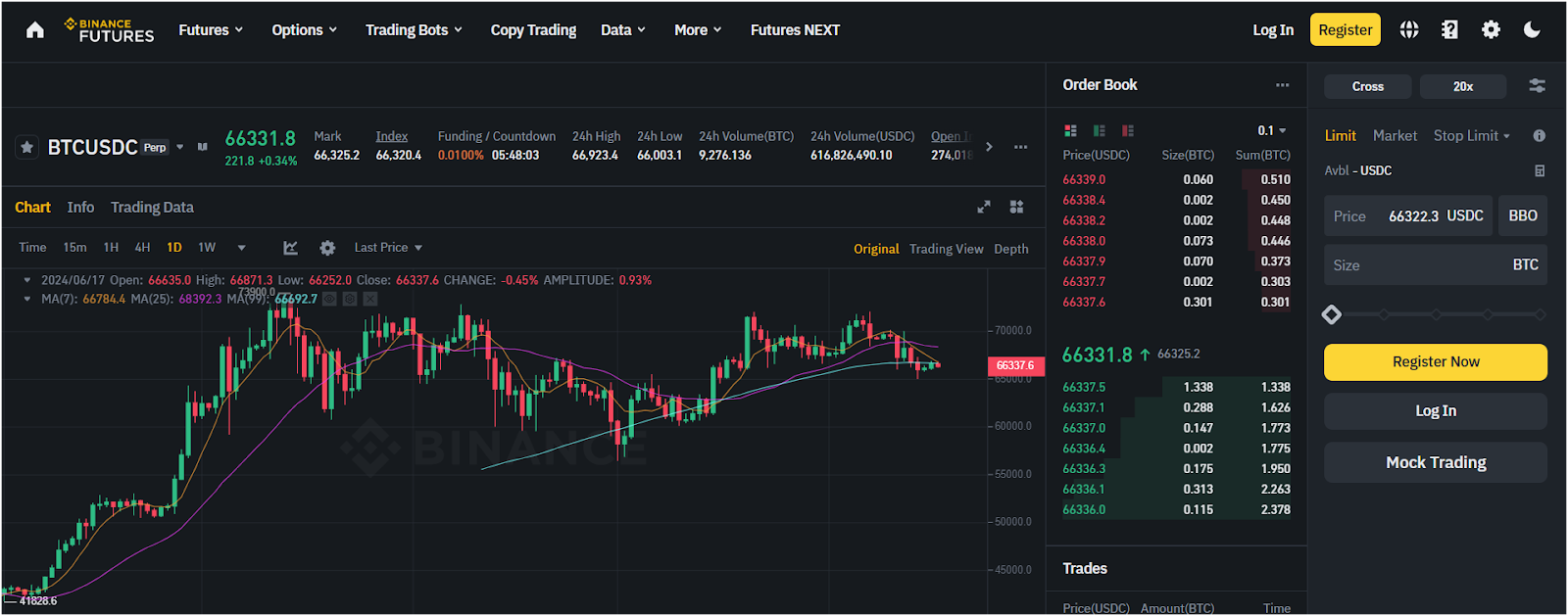
Binance also offers options trading. This allows you to speculate on the future price movements of cryptocurrencies without directly owning them. By using options contracts, you can bet on whether the price will go up (call option) or down (put option) within a certain timeframe. It offers European-style options contracts, which can only be exercised at expiry.
Margin Trading
Binance Margin Trading allows you to borrow funds to increase your trading position, offering leverage of up to 5x. It provides both cross-margin and isolated-margin trading.
Here are some key points to consider:
- Cross Margin vs. Isolated Margin: Cross margin uses the entire margin balance to avoid liquidation, whereas isolated margin limits the risk to the margin assigned to a specific position.
- Leverage: You can trade with 5x leverage, enhancing potential gains.
- Borrowing and Repayment: Borrow funds directly from Binance and repay them as per the required interest rates and terms. Interest rates are calculated hourly.
Copy Trading
Binance Copy Trading lets you copy the strategies of experienced traders, called Lead Traders, in both Spot and Futures markets.
It offers detailed profiles of each Lead Trader including their performance, PnL, strategies, risk tolerance, and trading history. This transparency helps you choose a Lead Trader that aligns with your investment goals and risk appetite.
When you copy a trader, a share of your profits, up to 10%, is paid to them, creating an incentive alignment between you and the Lead Trader. This feature simplifies trading for beginners and offers a potential passive income stream for experienced traders.
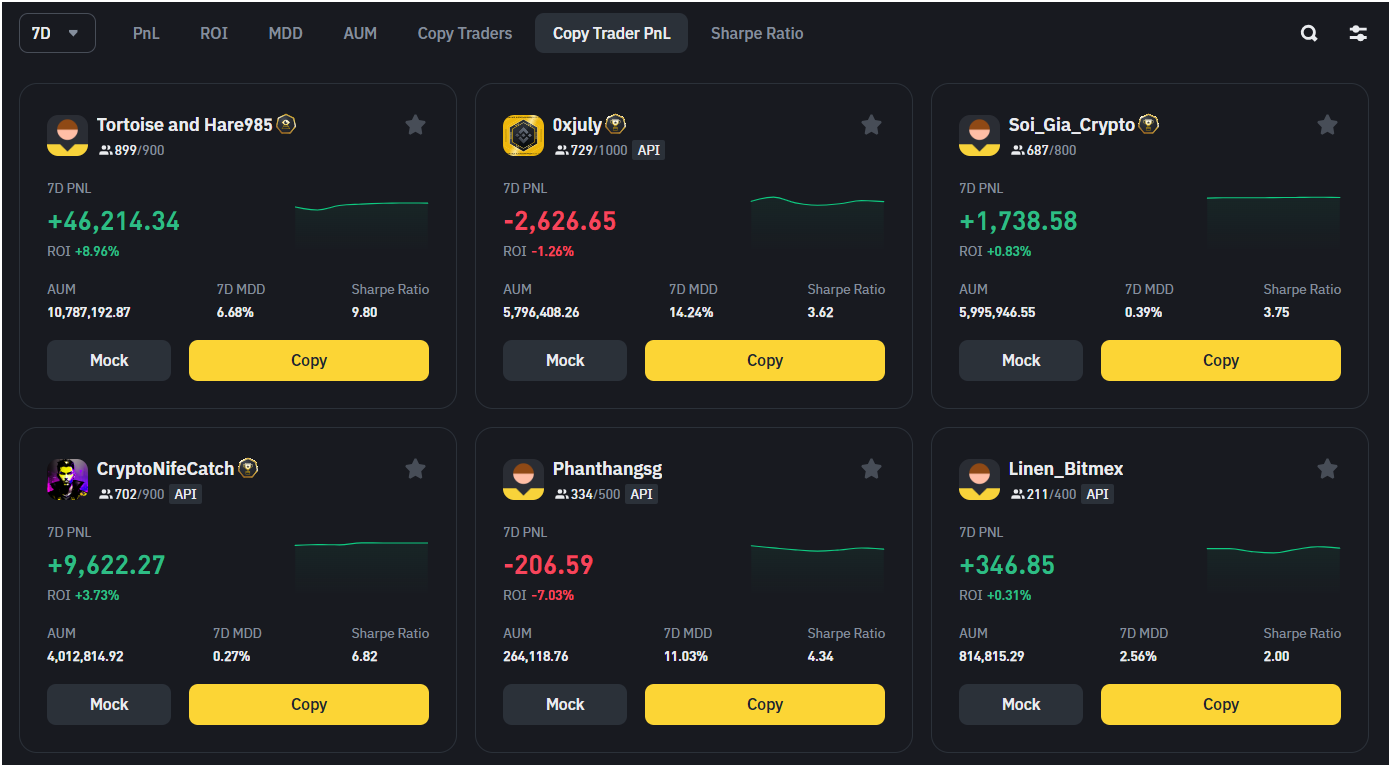
Binance Trading Bots
Binance offers several crypto trading bots to automate trading strategies, including Grid, Arbitrage, Rebalancing, and TWAP bots. Here is a quick overview of Binance bots:
- Grid Trading Bot: Executes buy and sell orders at preset intervals within a specific price range, ideal for capturing profits in a volatile market. It offers grid trading for both the spot and futures markets.
- Arbitrage Bot: An arbitrage bot exploits price differences between different markets or trading pairs. It buys low on one market and sells high on another, pocketing the profit before the price gap closes.
- Rebalancing Bot: A rebalancing bot monitors your crypto portfolio and automatically buys or sells assets to maintain your desired allocation. This helps you stick to your long-term investment strategy and manage risk by keeping your portfolio balanced.
- TWAP (Time-Weighted Average Price) Bot: It will split your total order into smaller chunks and buy them steadily throughout your chosen timeframe. This aims to achieve an average price between the highest and lowest points during that period, reducing the impact of volatility on your overall purchase price.

Binance Earn Services
Binance Earn provides a suite of financial products designed to generate passive income on your cryptocurrency holdings. Here’s a breakdown of the products:
- Flexible Savings: Earn interest on your crypto with the advantage of withdrawing your funds at any time. This offers a balance between convenience and potential returns.
- Locked Savings: Commit your crypto for a fixed term (7, 14, or 30 days typically) to earn higher interest rates compared to Flexible Savings. This rewards users willing to lock up their holdings for a set period.
- Dual Investment: Invest in two cryptocurrencies simultaneously (e.g., btc-USDT) and earn returns based on the asset with better performance over a predetermined timeframe. This allows you to potentially benefit from price movements in either direction. You can choose between Bullish and Bearish.
- Mining Pool: Participate in Binance’s mining pools to earn rewards by contributing your crypto’s computational power to validate transactions on a Proof-of-Stake blockchain. This eliminates the need for individual mining equipment.
- crypto Loans: Borrow cash or stablecoins by using your crypto as collateral. This provides liquidity without selling your holdings, allowing you to leverage your crypto for other opportunities while retaining ownership.
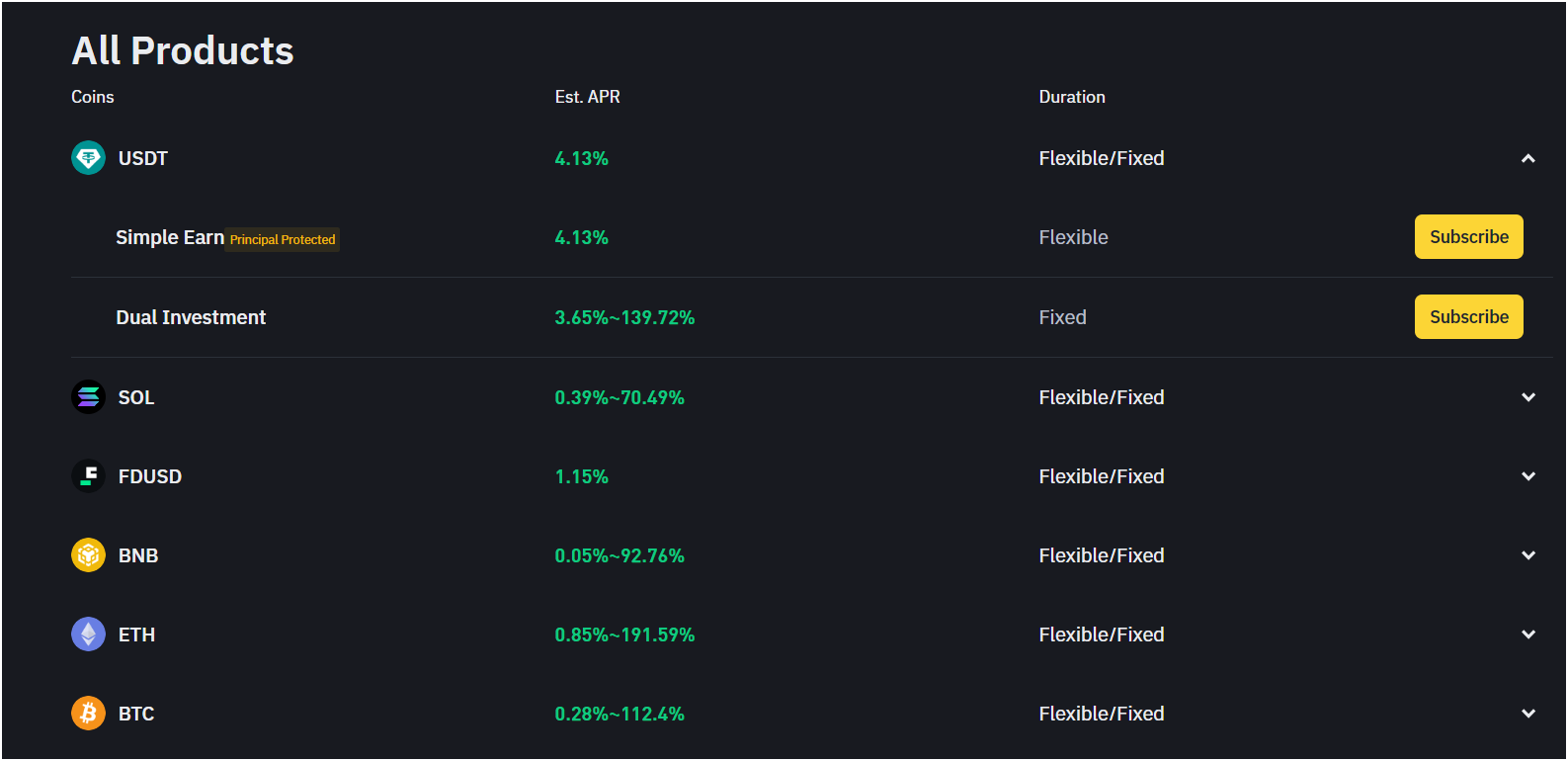
Binance P2P Trading
Binance P2P Trading allows you to buy and sell cryptocurrencies directly with other users, facilitated by an escrow service. It also has zero fees on P2P trades.
The escrow service ensures that transactions are secure and fair by holding the seller’s crypto until the buyer confirms the payment. This process reduces the risk of fraud, making P2P trading a safe and reliable option for acquiring or liquidating crypto assets.
Additionally, Binance P2P supports over 100 fiat currencies and 800+ local payment methods, including bank transfers and online wallets like Google Pay, UPI, Banxa, etc., providing flexibility and convenience for traders worldwide.
Binance Launchpad
Binance Launchpad is a platform designed to help promising blockchain projects raise capital and gain traction. It acts as a launchpad for new cryptocurrencies and tokens by providing them with access to Binance’s large user base and resources.
Here’s how it works:
- Project teams apply to list their tokens on Binance Launchpad.
- Binance reviews the applications and selects projects with strong potential.
- Selected projects go through a multi-stage launch process.
- Binance users can participate in the launch process through BNB or FDUSD staking and acquire tokens of the new project.
There have been 93 projects launched on Binance Launchpad so far. This platform has become a popular way for new crypto projects to gain exposure and liquidity, while also offering users the opportunity to invest in promising early-stage ventures.

Leveraged Tokens
Binance Leveraged Tokens (BLVTs) are an interesting experiment that offers leveraged exposure to cryptocurrencies without directly using margin trading. Unlike margin trading where you borrow funds to amplify gains (and losses), BLVTs are a type of derivative product that aims to deliver magnified returns based on the underlying asset’s price movement.
BLVTs came in two flavors: BULL (UP) and BEAR (DOWN). Bull BLVTs aimed to amplify gains when the underlying crypto’s price increased, while Bear BLVTs aimed to profit from price decreases. The leverage ratio isn’t fixed but targeted in a range, say between 1.25x and 4x.
Imagine there’s a BLVT named BTCUP that targets 3x leverage on bitcoin’s price. If the price of bitcoin goes up by 5%, BTCUP would ideally aim to deliver a 15% increase (3 times the underlying movement). Conversely, a BLVT named BTCDOWN targeting 3x leverage would aim for a 15% gain if bitcoin’s price dropped by 5%.
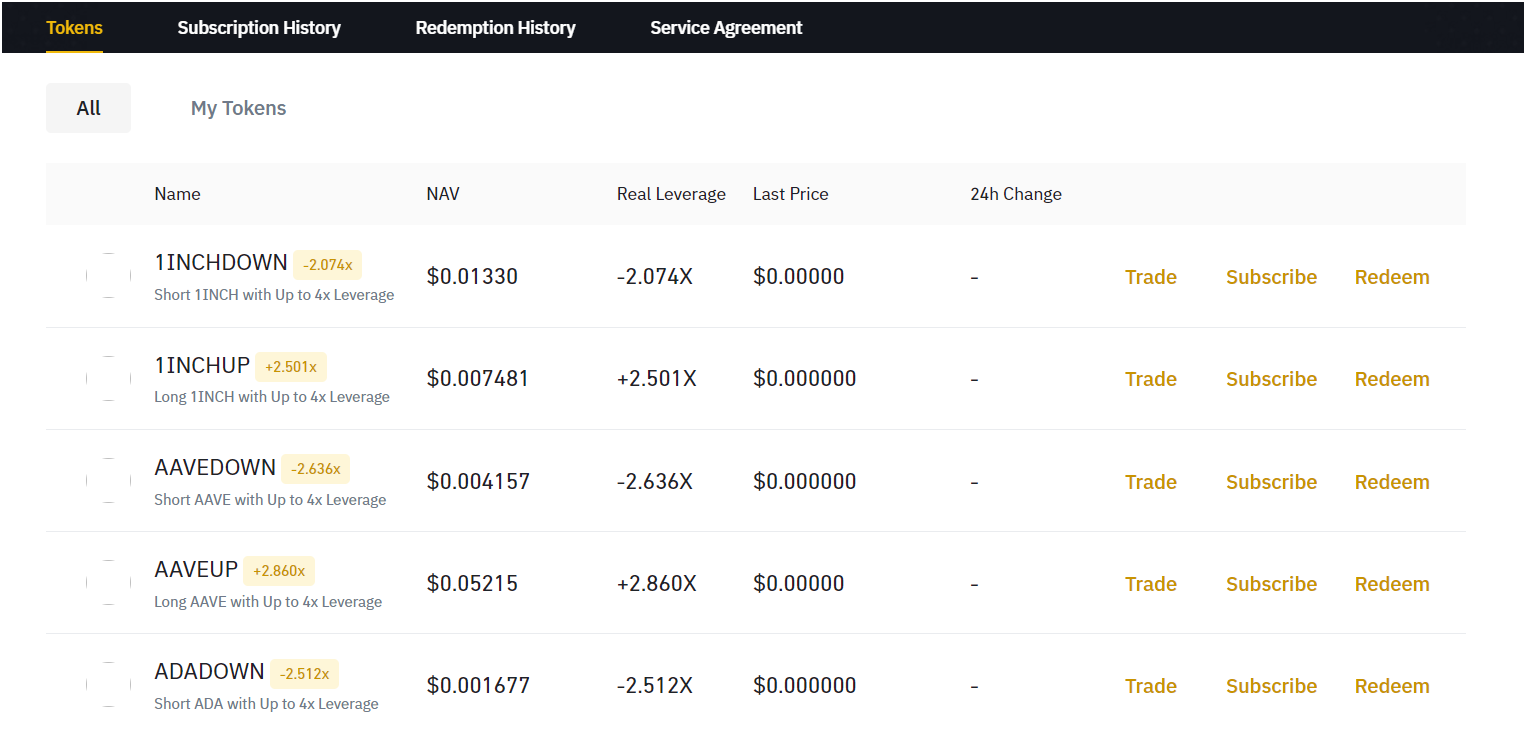
BNB Chain
Binance BNB Chain is a powerful blockchain, combining two previously separate chains: Binance Chain and Binance Smart Chain (BSC). This fusion creates a robust ecosystem specifically designed to fuel decentralized applications (DApps) and smart contracts.
The true strength of BNB Chain lies in its ability to attract developers and users. Here’s why:
- DApps: Over 538 DApps have already been built on the BNB chain, showcasing the chain’s suitability for creating innovative decentralized applications in various sectors like ai, metaverse, gaming, and more.
- Speedy and Affordable: Transactions on BNB Chain are known for their impressive speed and remarkably low fees compared to other major blockchains. This makes it a cost-effective and efficient platform for both developers and users.
- Rewards: Holders can stake their BNB tokens to participate in governing the network. This staking process not only contributes to the security of the chain but also rewards users with incentives for their participation, further driving decentralization.
Binance nft Marketplace
Binance nft Marketplace has become a popular destination for trading non-fungible tokens (nfts). Unlike traditional marketplaces limited to a single blockchain, it allows you to buy, sell, and trade nfts across multiple chains, including the popular BNB Chain and ethereum.
This flexibility opens the door to a wider variety of nfts, encompassing everything from digital artwork and collectibles to unique virtual items.
The platform provides user-friendly tools for creators to mint and sell their nfts, with transparent minting fees. This accessibility encourages a wide range of artists and creators to participate in the growing nft ecosystem, expanding the variety and volume of nfts available for collectors and traders.
<img class="alignnone br-lazy" src="https://technicalterrence.com/wp-content/uploads/2024/06/1719511848_886_Features-Fees-Pros-Cons.png" loading="lazy" decoding="async" alt="Binance nft Marketplace” width=”1600″ height=”723″/>
Binance Pay
Binance Pay cuts out the middleman for cryptocurrency transactions. Imagine a system for sending, receiving, and even spending cryptocurrencies, that works anywhere in the world and doesn’t charge any fees. That’s the core functionality of Binance Pay.
Beyond the basics, Binance Pay boasts a wide range of features. You can choose from over 200 different cryptocurrencies, including major players like bitcoin and ethereum, to carry out transactions. This flexibility caters to users with diverse crypto holdings. Transactions themself are borderless, meaning you can send and receive crypto from anyone around the globe without restrictions.
The benefits extend to businesses as well. By integrating Binance Pay, merchants can open their doors to a whole new customer base: crypto users. This not only expands their payment options but also attracts a tech-savvy demographic.
The entire system prioritizes security. It utilizes robust security features to safeguard user funds and transactions. This makes it a reliable option for those wary of traditional online payment methods.
Binance Wallet (Web3)
The Binance Web3 Wallet is a simple and secure tool within the Binance app. It helps you enter the decentralized web, also known as Web3, without the usual hassles of crypto wallets.
You don’t need to worry about keeping a seed phrase. Instead, it uses an MPC technology that splits your private key into three parts stored in different places, like your device and cloud storage. This keeps your assets safer by reducing the risk of losing them.
Creating the Binance crypto wallet is quick and easy. You can set it up in seconds using the Binance app. The wallet lets you manage different cryptocurrencies, swap tokens across various blockchains, and explore decentralized applications (dApps). You can also move funds smoothly between your Binance Exchange account and your Web3 wallet, swap tokens at good rates, and earn rewards on your assets through staking and lending.
The wallet is designed to give you full control over your assets. It’s a self-custody wallet, meaning only you have access to it. If you lose access, Binance can’t help you recover it, so it’s important to back up your wallet and keep your recovery details safe.
The wallet also has an “Emergency Export” feature, letting you get your private keys if you ever need to, ensuring you always have access to your assets.
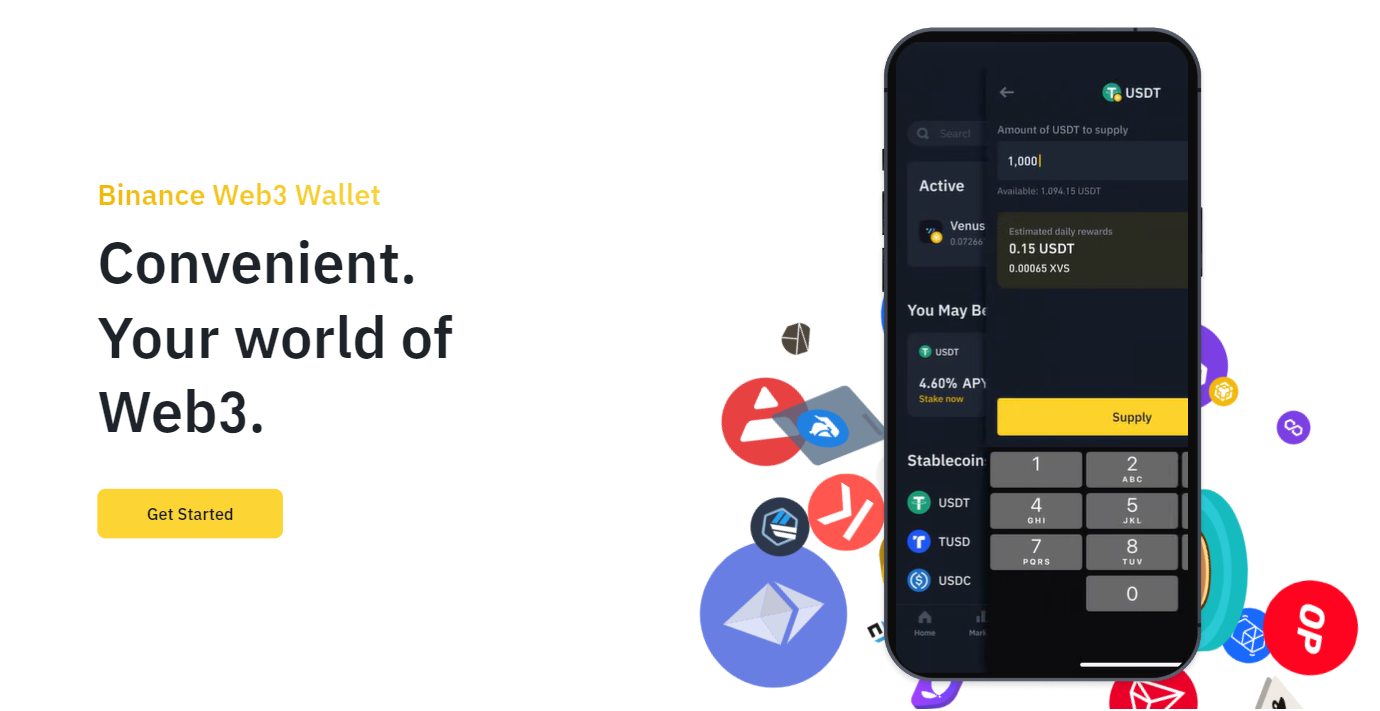
Cryptocurrencies Available on Binance
Currently, Binance offers 389 different coins and over 1200 trading pairs. This extensive selection includes coins from various niches such as artificial intelligence (ai), metaverse, real-world assets (RWAs), gaming, DeFi, and more.
On Binance, you will find some of the most popular and high-market cap coins. However, if you are interested in trading low-cap coins, you might not find them on Binance. For low-cap coins, you can check out our review of MEXC, another crypto exchange that specializes in this area.
Binance supports some popular cryptocurrencies, which include:
- bitcoin (btc)
- ethereum (eth)
- Binance Coin (BNB)
- Cardano (ADA)
- Solana (SOL)
- Polkadot (DOT)
- Chainlink (LINK)
- Avalanche (AVAX)
- Shiba Inu (SHIB)
- Polygon (MATIC)
Binance Payment Methods
Binance offers a variety of payment methods to fund your account. Here is the list:
- Bank Transfer (ACH, SEPA, etc.)
- Debit/Credit Card (Visa, Mastercard, etc.)
- Third-party channels like Banxa, MoonPay, etc.
- Cash deposits
- Binance Pay
- E-wallets like Google Pay and Apple Pay
Binance also offers an extensive P2P market where you can buy and sell crypto using over 800+ local deposit methods. This means you can find a payment method that works for you, regardless of your location.
Customer Service and Reviews
Binance offers various customer support channels to address user inquiries and concerns.
- Live Chat: For real-time assistance, Binance boasts a 24/7 live chat function. This is likely the most preferred method for quick questions or urgent matters.
- Support Ticket System: For more complex issues requiring detailed explanations, a support ticket system is available. While response times may vary, it allows for a documented record of the communication.
- FAQ Center: An extensive FAQ center is a valuable self-service resource. It covers a wide range of topics, from account setup and trading basics to security and troubleshooting guides.
- Social Media: Binance maintains a presence on various social media platforms like twitter and Telegram. While not explicitly advertised for support purposes, some users find success reaching out through these channels for general inquiries.
Talking about user reviews, Binance receives 85% negative reviews on Trustpilot. However, most of these are fake, according to Trustpilot. The Binance app receives a 4.6/5 rating on the Play Store and the same 4.6/5 on the bitcoin–crypto/id1436799971″ data-wpel-link=”external” target=”_blank” rel=”nofollow external noopener noreferrer”>App Store.
While Binance offers multiple avenues for customer support, user experiences seem to vary. The live chat function appears to be the most popular choice, but wait times and the effectiveness of communication can be inconsistent.
Trading Experience
Binance offers a user-friendly trading platform with a variety of options and assets. The most basic option is “Convert”, where users simply choose their cryptocurrencies and execute the trade without charts, order books, or fees.
For more experienced users, Binance offers the “Classic” trading platform. The trading interface might seem complex at first, but it displays charts, order books (showing buy and sell orders), and your trade history. Don’t worry, Binance also offers tutorials and guides to help you navigate it.
You can place different order types to control how your trade gets executed. A “market order” buys or sells at the current market price, while a “limit order” allows you to specify the price you’re willing to buy or sell at. It also has a mobile app for both Android and iOS devices.
Therefore, Binance offers a user-friendly platform for buying and selling crypto, with features for both beginners and experienced traders.
What We Don’t Like
Binance isn’t without its drawbacks. While it boasts a massive user base and extensive features, some aspects can leave some users wanting.
One major concern is the limited channels for withdrawing fiat currency, the traditional government-issued money like US dollars or Euros. This can make it cumbersome to convert your crypto holdings back to cash, especially for users in certain regions.
Another major concern is Binance’s ongoing legal issues (Binance vs. SEC saga), especially with the United States Securities and Exchange Commission (SEC). The SEC has accused Binance of breaking several rules, leading to a long and very public legal fight. This situation has made some users worry about how safe and compliant Binance really is.
Binance’s CEO, Changpeng Zhao, also known as CZ, is also sentenced to 4 months in prison after pleading guilty to violating U.S. laws against money laundering.
In addition, some users are unhappy with the limited selection of altcoins on Binance. Although it supports many cryptocurrencies, it is sometimes slow to list new projects. Other exchanges often add new and upcoming cryptocurrencies faster, which can be frustrating for users who want to invest early in new and promising digital currencies.
Another big drawback is that Binance is not available in the United States. Instead, there is Binance.US, which is a separate platform. However, Binance US does not offer all the features that the global Binance platform does. It supports fewer cryptocurrencies and has limited functionality, which means the experience for US users is not as good as for users in other countries. This separation is due to specific US regulations, but it still leaves American users feeling like they are missing out on what Binance has to offer.
Binance Comparison with Other crypto Exchanges
Bybit and Coinbase are the best Binance alternatives to consider. Here is a quick Binance vs. Bybit and Binance vs. Coinbase comparison:
| Features | Binance | Bybit | Coinbase |
| Founded | 2017 | 2018 | 2012 |
| Best for | Best for high-volume traders | Best for derivatives trading | Best for US traders |
| Supported Cryptos | 389+ | 1,200+ | 241+ |
| Trading Products | Spot, futures, margin, copy trading, options, trading bots, P2P | Spot, futures, margin, options, copy trading, P2P, and bots | Spot and Futures (only for qualified crypto traders) |
| Maximum Leverage | 125x | 100x | 10x |
| Trading Fees | 0.1% maker and taker | 0.1% maker/taker | 0.4% maker and 0.6% taker |
| Funding Methods | Bank transfer, debit/credit cards, Google Pay, Apple Pay | Debit cards, credit cards, in-person cash payments, and 300+ more. | ACH, SWIFT, SEPA, and Wire transfer |
| PoR (Solvent) | Yes | Yes | Yes |
How to Open an Account on Binance?

Step 1: Create a Binance Account
To begin using Binance, you need to create an account. Visit the official Binance website. On the homepage, you will find a “Sign Up” button in the top right corner. Click on this button to start the registration process.
You will be asked to provide your email address and click “Next”. Now, create a strong password. Make sure your password is unique and secure. You can also enter our Binance referral code “QH6V74V5” to get a signup bonus and fee discount. After entering these details, click on the “Create Account” button.
Binance will send a verification email to the email address you provided. Open this email and click on the verification link to confirm your email address.
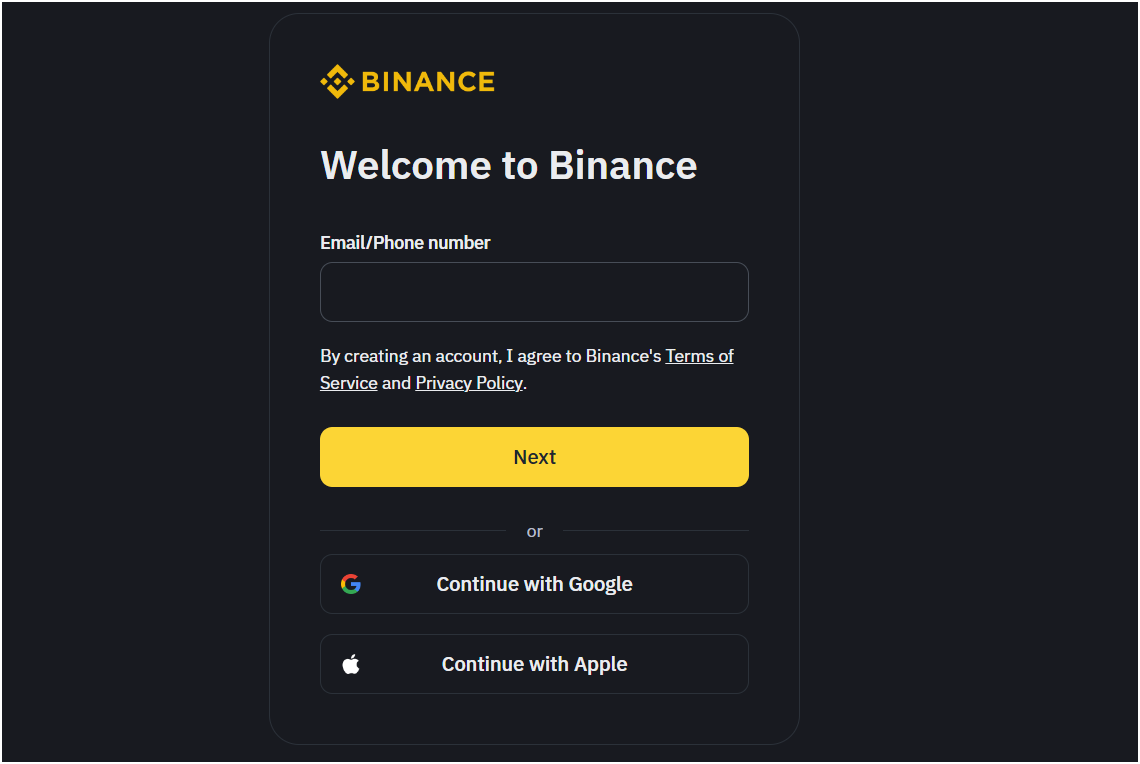
Step 2: KYC Verification on Binance
Once you’ve created your Binance account, it’s important to complete Know Your Customer (KYC) verification. This helps Binance comply with regulations and keeps the platform secure for everyone.
To begin KYC, click the “Profile” icon in the top right corner. Select “Account” from the dropdown menu and click “Identification”. You’ll see different verification levels.
Basic verification is the minimum requirement. Start by providing your personal details like name, date of birth, and address. You’ll need to upload a clear photo of a government-issued ID (passport, driver’s license, or ID card).
You will also be asked for a selfie and a photo of yourself holding your ID. Follow the on-screen instructions carefully. Once submitted, verification typically takes a few minutes to several hours.
There’s Advanced verification, which may require additional documents like income proof. This is optional, but recommended if you plan on trading large volumes.
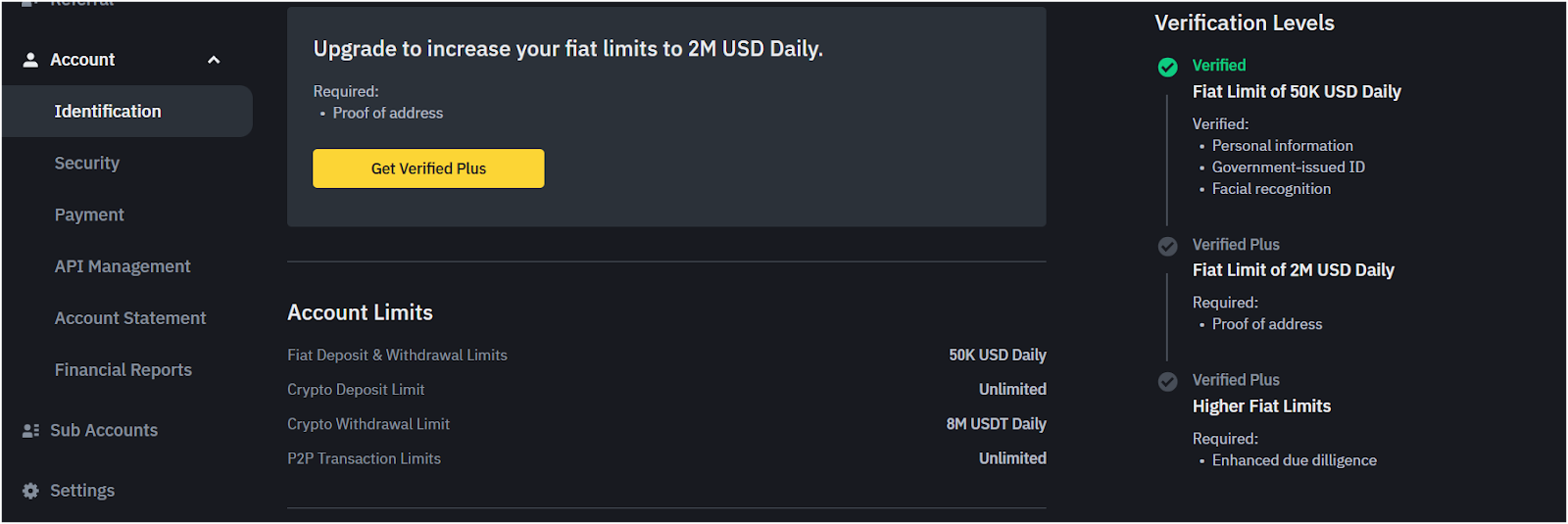
Step 3: Deposit Funds on Binance
If you already own cryptocurrency, depositing it directly into your Binance wallet is an option. Go to the “Deposit” button. Choose “Deposit crypto” to see a list of supported cryptocurrencies. Find the one you want to deposit.
Binance will provide a unique deposit address specific to that cryptocurrency. Copy this address and use it as the recipient address when transferring funds from your external wallet. Double-check both the address and the network you select to avoid losing your funds.

For those who prefer fiat currency like dollar deposits, Binance offers several deposit options like bank transfers and credit/debit cards. Go to the “Deposit” button and this time choose “Bank Deposit”. You’ll see various deposit methods, including bank transfer (SWIFT or SEPA) and credit/debit cards.
Select your preferred method and follow the on-screen instructions. Bank transfers require your bank details and initiating a transfer from your bank account. This can take a few days depending on your bank. Credit/debit card deposits involve entering your card details and completing the transaction, usually instant but with potentially higher fees.
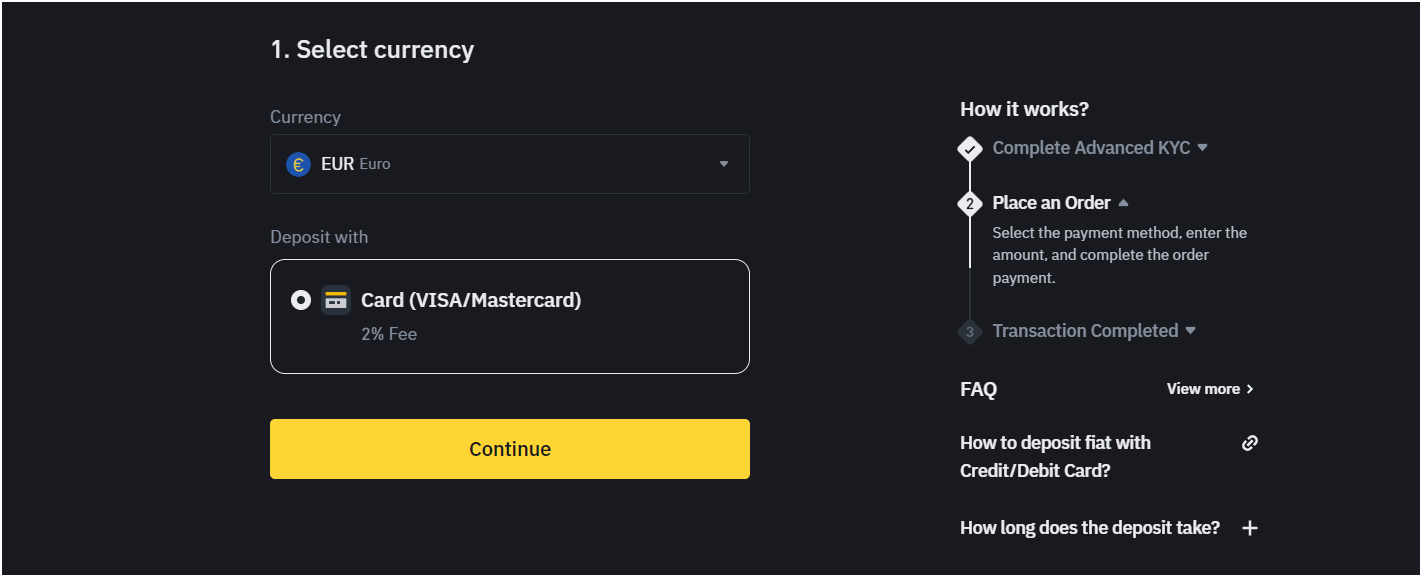
Step 4: Start Trading crypto on Binance
Binance’s services encompass various cryptocurrency trading and investment opportunities. Navigate to the “Trade” dropdown menu at the top. For a beginner-friendly experience, choose “Spot”. On the left side, you’ll find the trading pairs listed. To trade bitcoin (btc) for ethereum (eth), for instance, locate the btc/eth trading pair.
The center of the page displays the price chart alongside the order book, which shows buy and sell orders from other users. Below this is the order entry section. When placing a trade, you can choose between Market, Limit, and Stop-Limit orders.
Enter the desired trade amount and price (if using Limit or Stop-Limit). Double-check your order details before clicking “Buy” or “Sell” to confirm the trade.
<img class="alignnone br-lazy" src="https://technicalterrence.com/wp-content/uploads/2024/06/1719511849_958_Features-Fees-Pros-Cons.png" loading="lazy" decoding="async" alt="Step 4: Start Trading crypto on Binance” width=”1105″ height=”561″/>
Final Verdict
Our Binance review highlights that it has become a leading cryptocurrency exchange in the world. It offers a variety of services beyond just trading, including copy trading, margin, and futures contracts. Features like Binance nft, Charity, and Academy cater to a broad audience.
Binance is also known for its high trading volume, competitive fees, and user-friendly platform. For both beginners and experienced traders, it offers opportunities to earn passive income or engage in advanced strategies. Whether you’re interested in trading, staking, or nfts, Binance provides a comprehensive platform for cryptocurrency enthusiasts around the world. You can also check out our other crypto exchange-related guides like Bitget review and OKX review.

Binance Exchange Review: FAQs
Is Binance legit & trusted?
Yes, Binance is considered a legit and trusted cryptocurrency exchange with over 200 million registered users. It is registered in several jurisdictions and adheres to regulatory requirements in many countries. It employs advanced security measures, such as two-factor authentication and cold storage for assets, to protect user funds.
What is the withdrawal limit on Binance??
The withdrawal limit on Binance varies depending on the user’s level of verification. With basic verification, you can withdraw up to 8 million USD per day with a 50,000 USD fiat limit. Advanced verification offers even higher limits, depending on the region and regulatory compliance.
Can you make money with Binance?
Yes, you can make money with Binance. Methods include trading cryptocurrencies, staking, and using Binance Earn for interest. It also offers futures and options trading for advanced users. Binance referral programs provide additional earning opportunities.
Is Binance better than Coinbase?
Binance offers lower fees and more cryptocurrencies, suitable for experienced traders. It is more user-friendly, making it ideal for beginners. On the other hand, Coinbase has stricter regulatory compliance, especially in the US.
Can US citizens use the Binance platform?
Binance has a separate platform for US users called Binance.US. This platform complies with US regulations and offers a limited selection of cryptocurrencies for trading. The main Binance platform is not available to US residents due to regulatory restrictions. Binance.US has fewer features compared to the main platform but still offers a good variety of trading.
 NEWSLETTER
NEWSLETTER





